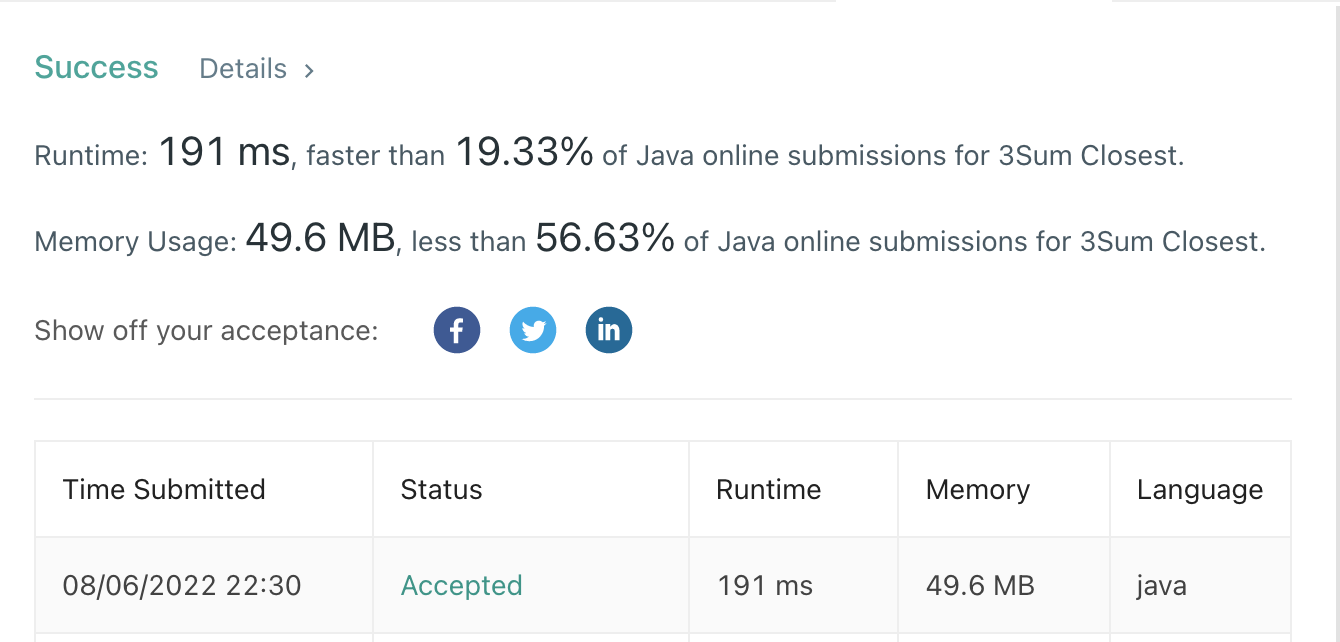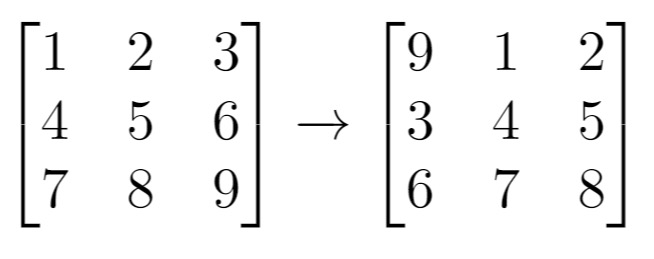Leetcode 16 最接近的三数之和 ( 3Sum Closest *Medium* ) 题解分析
题目介绍
Given an integer array nums of length n and an integer target, find three integers in nums such that the sum is closest to target.
Return the sum of the three integers.
You may assume that each input would have exactly one solution.
简单解释下就是之前是要三数之和等于目标值,现在是找到最接近的三数之和。
示例
Example 1:
Input: nums = [-1,2,1,-4], target = 1
Output: 2
Explanation: The sum that is closest to the target is 2. (-1 + 2 + 1 = 2).
Example 2:
Input: nums = [0,0,0], target = 1
Output: 0
Constraints:
3 <= nums.length <= 1000-1000 <= nums[i] <= 1000-10^4 <= target <= 10^4
简单解析
这个题思路上来讲不难,也是用原来三数之和的方式去做,利用”双指针法”或者其它描述法,但是需要简化逻辑
code
1 | public int threeSumClosest(int[] nums, int target) { |
结果



